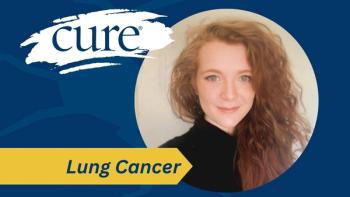
- Summer 2007
- Volume 1
- Issue 1
A Time to Heal
It's 2007, and cancer survivors have come of age.
It’s 2007, and cancer survivors have come of age. Researchers, healthcare professionals, and even the government have finally recognized us as a real demographic. Defined by our association with cancer, either as patients or as “co-survivors” (those who go through cancer with the patient), we represent the very breadth of America: all races, all ages, all economic levels, all education levels, all faiths, and all political persuasions.
We have come a long way. No longer do we immediately hear about “getting back to normal” after cancer—knowing that it’s not possible. And we can talk about cancer in a group without everyone scattering. But, while we share the fact that somewhere in our lives we have been affected by cancer either directly or indirectly, what happens after the diagnosis will be unique for each of us as we struggle to become the person who emerges from the cancer experience.
Heal magazine is for each of you on this journey—a roadmap, if you will.
In this premiere issue you will read the story of Erin Zammett Ruddy, diagnosed at age 23 with leukemia and offered a new treatment that only six months before her diagnosis was not available. Relying on a once-a-day pill that keeps her cancer at bay, she and her husband have decided to have a baby, meaning that for 10 months she will not take her lifesaving drug.
We chose Erin for our cover story because she represents our hope for all survivors—that one day a cancer diagnosis will require little more than taking a daily pill.
You will also read about how this movement of cancer survivorship has arrived. We chronicle the milestones of the movement and the heroes who paved the way.
Richard Roundtree talks about his personal experience with breast cancer and the challenge of going public for a macho actor, who now has become a spokesman about the disease in men.
Exercise and nutrition have been shown to be very important in staying healthy, to the point that we are inundated with information and often don’t know what to believe. Heal will sort the facts on these topics, beginning with a story about vitamin D in this issue.
In addition, breast cancer survivor Diane Balma, vice president of public policy for Susan G. Komen for the Cure, addresses important questions for us when she tried to find her original tumor tissue for more testing: Where is it? How do I get it?
We want to bring you hope, inspiration, and joy along with the realities of new findings that may affect you.
The Heal editorial team features some new faces as well as some familiar ones you know from our sister publication CURE, the magazine for the newly diagnosed cancer patient. Our publisher, Susan McClure, a breast cancer survivor and our anchor, will lead both CURE and Heal into a promising future. As editor-at-large, I will continue to bring you stories you won’t see in other publications, traveling the country, and digging beneath the obvious to find the real story. Susan Douglass, award-winning creative director for CURE, has designed another unique look and feel for Heal (she is assisted by Ivy Howell). Karen Patterson, a long-time medical editor, brings us her expertise in mental health and social issues. CURE veterans Elizabeth Whittington and Melissa Weber also contribute their writing skills.
To be sure Heal is everything you need, and conveyed in the best possible way, we have assembled an expert national advisory board, many of whom are involved in cutting-edge research on survivorship. You will have a chance to ask this board questions about your concerns. In addition, we will be asking you to write to us about a number of issues so we can share them with our readers.
And help us spread the word that Heal has arrived.
Articles in this issue
over 18 years ago
Where Art & Science Intersectover 18 years ago
The Vitamin D Differenceover 18 years ago
Making the Most of Medicareover 18 years ago
Beyond "Cured"over 18 years ago
Snippetsover 18 years ago
Life Choicesover 18 years ago
The Survivor Has Arrivedover 18 years ago
Who’s Got You Covered?over 18 years ago
From Secrecy to Advocacyover 18 years ago
Defining Survivorship



